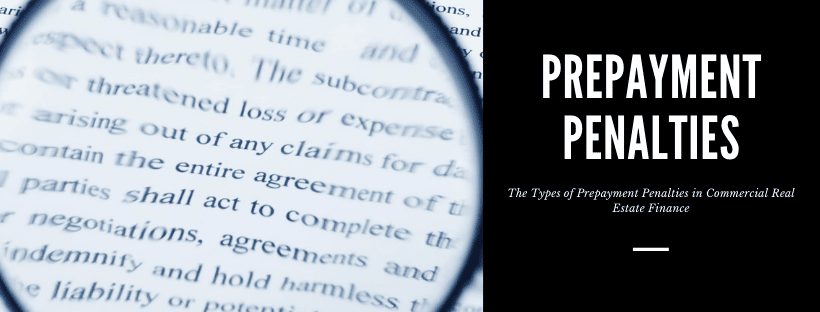Commercial Mortgage Calculator
Summary
Amortization Schedule
On This Page
Use our free commercial real estate loan calculator to calculate the details of a commercial mortgage easily and quickly. Based on the data you input, the Commercial loan calculator will help you calculate your estimated monthly Principal and Interest (P&I) payment for the loan and an Interest Only payment and Balloon payment.
Using the Commercial Mortgage Calculator
Whether you are looking at Fannie Mae Multifamily loan, Freddie Mac Multifamily loan, CMBS loan, or FHA/HUD commercial multifamily loans, there are a few specifics you must provide. You'll need to know the:
- Principal Loan Amount ($)
- Interest rate (%)
- Maturity (years)
- Amortization (years)
The duration of most Commercial real estate mortgages varies from five years (or less) to 20 years, and the amortization period is often longer than the term of the loan.
Often overlooked is the amortization schedule when calculating payments. In some cases the amortization can have a bigger impact on the monthly payment than the actual interest rate of the commercial loan.
What the Real Estate Mortgage Calculator Shows
The amortization schedule shows how your monthly mortgage payment is split between interest and principal over the duration of the loan. Most of your payment will go towards interest at the start of the loan, but it'll shift to primarily going toward the balance as your mortgage nears its end.
When evaluating whether you can afford a particular mortgage, it's important to keep in mind that your mortgage payment is only one of the costs that come with purchasing a commercial property. You'll also have to pay insurance premiums and taxes, and these costs frequently get broken up into monthly escrow payments even though they're due just once per year.
Other expenses to keep in mind include landscaping fees, utility costs (including heating and air conditioning costs) and maintenance costs. Your mortgage payment and all of these other expenses should fit comfortably into your company's monthly budget.
Terms to Know When Applying For a Commercial Real Estate Loan
As you consider different real estate mortgage options and use the mortgage calculator, there are several technical terms to be familiar with and we a
Amortization Period: A method of debt repayment, in which fixed payments are made on a prearranged schedule. The payments are divided between principal and interest. Most amortization schedules decrease how much of a payment goes toward interest and increase how much goes toward principal as the loan proceeds.
Balloon Payment: A one-time payment that's made at a specific point in a loan's repayment schedule. The repayment is normally made toward the end of the loan's term or at the very end. Balloon payments are more common on commercial real estate mortgages than residential home mortgages, although plenty of home mortgages with balloons are available.
Basis Point (BP) - 1/100th of 1%. One basis point equals 0.01%
Debt Service - The money required to cover monthly or annual loan payments
Debt Service Coverage Ratio: Commonly referred to as “DSCR,” the debt service coverage ratio measures a borrower's ability to repay on a loan. To calculate DSCR, divide your net operating income by your total debt service. Any value above one shows that the debt is too much for an individual or business.
Cap Rate: Amount by which an adjustable mortgage rate may decrease or increase at each periodic adjustment.
Collateral: The asset that's used to secure a loan. Should the borrower fail to repay on a loan, the lender may seize any collateral that's provided against the loan. With real estate mortgages, the collateral used is the property that's purchased.
Loan to Value Ratio: Commonly referred to as “LTV,” the loan to value ratio to determine risk exposure and to quantify a borrower's leverage. The ratio is calculated by dividing the loan amount (principal) by the total value of the asset (collateral).
Debt Yield A ratio that shows the income generated by a property compared to how much is borrowed via a loan. The yield is calculated by dividing net operating income by loan amount (principal), and it shows what the cash-on-cash returns would be for a lender in the event of foreclosure.
Maturity Date: Sometimes referred to as the “life span” of a loan, the maturity date is the date on which a loan's final principal payment is made. Interest isn't charged after this payment is made, and the loan is considered to be paid in full at this point.
Prime Rate: The standard rate used when comparing interest rates offered by different lenders. The rate is what's issued to a lender's most credible clients. Many clients pay a higher rate depending on their creditworthiness, but all rates are based on this rate.
Prepayment Penalty: Prepayment penalties come in the form of step-down prepayment penalties, which start at a specific percentage and go down by 1% per year. For conduit loans, and CMBS they usually are offered in the form of yield maintenance or defeasance. Yield maintenance requires a borrower to make a payment to a lender that compensates them for all the interest returns they would have gained had the borrower not paid off the loan early. Defeasance occurs when a borrower purchases a basket of securities in order to replace the collateral of their loan.
Principal and Interest: Commonly referred to as “P&I,” principal and interest are two distinct items within a real estate loan. Principal is the original amount borrowed from the lender, and interest is the amount charged for borrowing the principal. Together, principal and interest make up what's paid on most standard real estate mortgages.
Refinance: A process through which a lender and borrow agree to revise or rewrite the terms of a loan. The original loan is effectively considered paid in full at the time of refinancing, and it gets replaced with a new loan.
Non-Recourse: A non-recourse commercial loan is one in which a lender cannot attempt to go after a borrower's personal assets if they default on their debt. However, most non-recourse loans have include stipulations that the loan will become a full recourse financial product should the borrower violate certain rules, such as intentionally declaring bankruptcy or giving misleading financial information to the lender.



